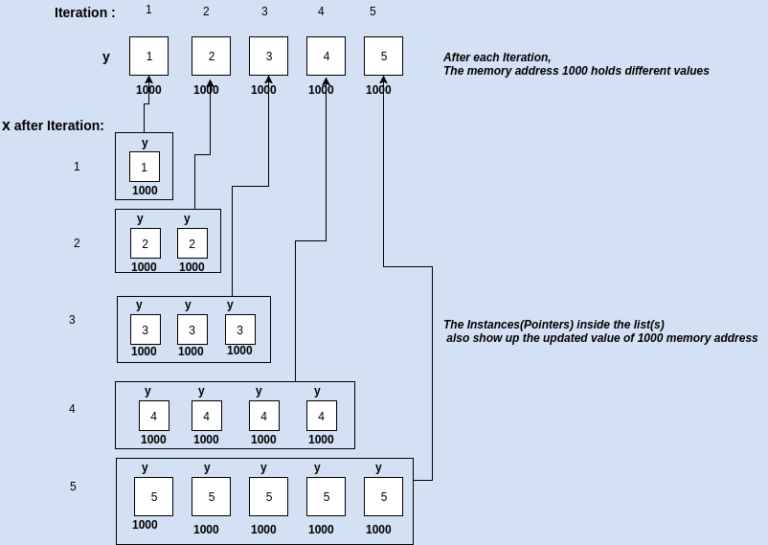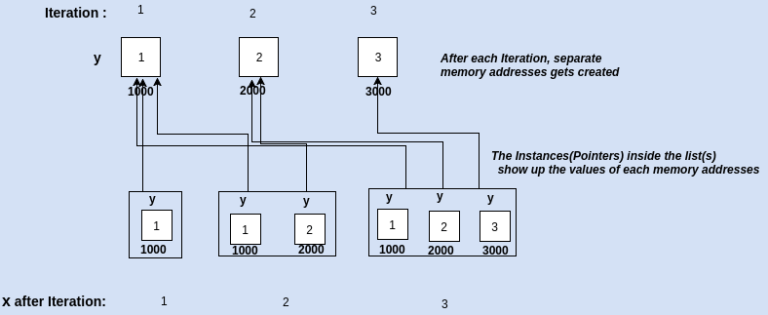Have you ever felt that Python’s flexible data structure list prevents you from doing what you want? Well, we experienced it. We had great learning while tackling this issue in Python. This article explains how we solved this issue.
It all started when we were executing crucial aspects of the project for one of our clients. We developed a code snippet with functionality similar to the below example snippet.
The aim was to create a list of distinct dictionaries inside the loop.

We thoroughly checked the logic and confirmed that it was all right. Then what was causing this unexpected behavior of the list?
Analysis
Here is an assessment of the above issue:
The dictionary we use inside the for loop, for example, “y,” is referenced every time we assign something new to it. After the final assignment, the object referenced(y) holds the last assigned value. Since the list contains many instances of the same referenced thing (y), all the instances contain the last assigned value. So, the output of the above snippet is the actual output rather than the Expected output.
Note: Here, ‘referenced’ means call by reference, for example, by memory address.
Below is a detailed understanding of this issue through diagrammatic representation:

Every problem has a solution! The above problem could be resolved using the following approach as follows:
Solution
We used Python’s in-built copy method. This method creates as many dictionaries as the range.

Note: The dictionary objects inside the list are now different; for example, all of them have their memory addresses.
Diagrammatic representation

So this way, you can use Python’s flexible data structure. We will strive to identify more of Python’s assets and keep you informed.



